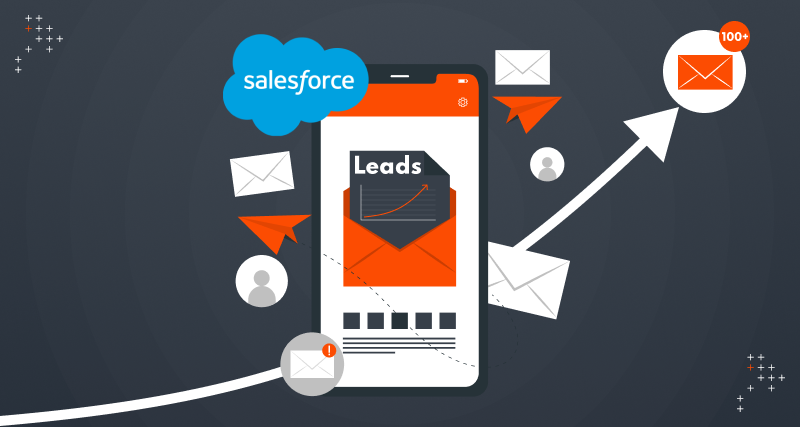Introduction
Optimizing email marketing campaigns can be challenging with organizations facing difficulties in:
- Maintaining an engaged list
- Reducing spam complaints
- Increasing email list size
- Achieving measurable ROI
- Integrating email data with other systems
- Leveraging personalization
- Optimizing for mobile

Salesforce Marketing Cloud Engagement solves these challenges with its robust suite of tools and functionalities.
Understanding Salesforce Marketing Cloud Engagement
Salesforce Marketing Cloud Engagement is a marketing automation platform. It helps businesses personalize and automate customer interactions across multiple channels and break departmental silos. This translates to streamlined marketing, personalized interactions, and improved customer engagement.
There are a few key features within Salesforce Marketing Cloud Engagement that help build effective email marketing campaigns.
Email Studio
Email Studio utilizes data to foster meaningful connections and deliver personalized messages to specific audience segments. With Email Studio, users can:
- Categorize and target the audience
- Design captivating emails
- Confidently distribute feature-rich campaigns
For example, an ecommerce business can create email campaigns to attract new leads. The journey can begin with promotional emails consisting of product links. By tracking the clicks, prospects can be segmented based on their interests.
As soon as a prospect clicks on the link, they will receive triggered emails with related products. If the prospects don’t explore any links within a specific timeframe, a set of new triggered emails will be sent consisting of other product segments.

Journey Builder
Journey Builder has an intuitive interface that allows organizations to automate personalized customer journeys. Users can map and design the customer's digital experience, from the first point of contact to the final interaction.
Organizations can use Journey Builder to send the right message at the right time based on customer behaviors, preferences, and sales cycle stages. It provides analytics and reporting tools to monitor performance and optimize customer journeys in real time.
For example, an organization can build customer journeys for new inbound leads or prospects with the goal of personalizing experience. The first step is to segment the leads and begin the newsletter signup to obtain customer information. On the basis of this information, the leads can be labeled as ‘sales ready’ or ‘not sales ready.’
Strategic emails can be sent to further identify the interest of the ‘sales ready’ prospects and engage them in relevant campaigns. For prospects labeled as ‘not sales ready,’ further emails can be sent to nurture them and improve brand awareness.

Analytics
Salesforce Marketing Cloud offers robust reporting and analytics tools to track crucial metrics such as click-through rates, open rates, conversions, and ROI. Marketers can leverage these insights to optimize marketing strategies, improve audience engagement, and drive better outcomes.
For example, a new retail organization wants to promote their business and attract new customers. To accomplish this, they distribute promo codes through email campaigns. Marketing Cloud Analytics can be used to track user engagement.
How To Create An Email Marketing Campaign In SFMCE
Organizations need to follow five steps to create an email marketing campaign within Salesforce Marketing Cloud.
Step 1: Campaign Strategy
Start by creating the strategy for the email marketing campaign.
- Establish Goals: Clearly define the objectives for the campaign, such as driving sales or increasing brand awareness.
- Target Your Audience: Segment the email list based on relevant demographics, interests, or behavior to personalize messaging and increase engagement.
Step 2: Content Creation
Craft compelling content by utilizing a clear, concise writing style that resonates with the audience. Personalize the content with subscriber data where applicable and incorporate a solid call to action (CTA) to guide desired user behavior.
Step 3: Design The Email
The next step involves designing an email that adheres to the brand and industry standards.
- Maintaining Brand Alignment: Utilize visually appealing elements and layouts to reflect the brand identity.
- Test Rendering: Ensure the email formatting is visually appealing.
Step 4: Campaign Execution
Execute the campaign by navigating to the "Campaigns" tab within Salesforce Marketing Cloud. If users have trouble locating it, access the App Launcher (the waffle icon to the left of the navigation bar) and search for campaigns there.

In the Campaigns window, click on the “New” button.

Follow a naming convention for your campaign and fill the “Campaign Name” field.

Mention other campaign details on the Campaign page layout. To finish the setup:
- Check the “Active” checkbox.
- Select a “Type.”
- Choose a “Status.”
- Start and End Dates help target the reporting based on specific time frames.
- Enter the Budgeted Cost in Campaign/Expected Revenue and the Campaign/Expected Response (%).
- Fill in the “Actual Cost in Campaign” once the campaign is concluded.

Step 5: Post-Campaign Optimization
Constantly monitoring the performance of the campaign.
- Analyzing Results And Iterating: The campaign data will help understand what resonated with the customers and possible areas of improvement.
- Refining The Strategy: Based on the campaign learnings, refine the approach for future campaigns.
- Optimize For Mobile: Ensure the email displays seamlessly across various devices, especially smartphones and tablets.
Additional Considerations
Some additional tips to further enhance email marketing campaigns within SFMCE are:
- Schedule The Emails: To maximize open rates, choose the ideal time and day of the target audience. According to Hubspot Blog Research 2023, the best time to send an email is 9:00 AM - 12 PM EST or 12:01 PM - 3 PM EST. The worst is 1 AM - 3 AM EST.
- Monitor And Analyze: Crucial metrics like click-through rates, open rates, and conversions will help gauge campaign performance.

Best Practices For Better Email Marketing Campaign Results With SFMCE
According to a research by Hubspot, the most effective strategies for maximizing email marketing revenue are:
- Audience segmentation (78%)
- Content personalization (72%)
- Email automation campaigns (71%)

1. Ensure Content Personalization
Personalization fuels deeper customer connections and boosts engagement. 86% of consumers are willing to pay more for a personalized customer experience. SFMCE leverages behavioral data and segmentation for personalized experiences, including the seamless integration of dynamic content into emails. Adding relevant multimedia also helps personalize the experiences.

2. Optimize Designs For Mobile
With 53.42% of global internet traffic coming from mobile devices, ensuring that the emails are optimized for mobile viewing is essential. Organizations can use common responsive design techniques to create emails visible on multiple mobile devices and screen sizes. Some of these techniques are:
- Ensure single-column layout
- Use a proper font and maintain content hierarchy
- Have a visually appealing CTA
- Use smaller and more responsive images
- Avoid too many hyperlinks
- Preview the email
SFMCE also provides responsive email templates and preview tools to help optimize the designs for mobile users.

3. Segment Audience
Segmentation is critical for delivering targeted and relevant content. Utilize Salesforce Marketing Cloud's Audience Builder to segment the audience based on demographics, behavior, preferences, and engagement history. Spotify utilizes SFMCE's segmentation capabilities to separate users based on listening history. This practice enhances user engagement and retention, increasing subscription renewals.
4. Automate Trigger Emails
Triggered emails based on behaviors improve engagement and nurture leads. The Journey Builder in Salesforce Marketing Cloud creates automated email workflows triggered by actions such as website visits, form submissions, or abandoned carts. This enables the timely delivery of relevant messages that guide recipients through the customer journey.

5. Perform A/B Tests
Testing and optimization are vital elements of a successful email marketing strategy. Salesforce Marketing Cloud's A/B testing capabilities facilitate experimentation with different subject lines, content variations, calls-to-action, and sender names. Analyzing the results will help detect what resonates best with the users and refine the email campaigns.

6. Analyze Performance Metrics
Regularly monitor and analyze crucial performance metrics to evaluate the effectiveness of the email campaigns. Salesforce Marketing Cloud's analytics tools track metrics such as open rates, click-through rates, conversion rates, and revenue generated.
For example, Puma uses SFMCE metrics to identify trends, patterns, and areas of improvement. The brand also uses these insights to optimize future campaigns for better results.
7. Maintain High Email Deliverability
Ensuring that emails land in recipients' inboxes is essential for successful campaigns. Pay attention to factors that affect email deliverability, such as sender reputation, email authentication, and list hygiene.
Focus on permission-based marketing, regularly cleaning the email list, and adhering to anti-spam regulations. These practices will help maintain a positive sender reputation and maximize deliverability.
8. Adhere To Customer Data Privacy Standards
Customer data security is one of the primary concerns for modern businesses. Market leaders like American Express use SFMCE to implement privacy measures while sending customized emails to their customers. For starters, inform the customers about collected data and how it will be used. Measures like these go a long way toward building customer trust and brand image.
Prateek Jain, Director of DXP Services at Axelerant, and Prateek Bansal, Manager of Management Consulting at Accenture, also talk about the importance of maintaining customer data privacy standards within the banking industry in a recent DXP Deconstructed episode.
Axelerant’s Salesforce Marketing Cloud Experts Can Help
Want to know more about how you can get better email marketing results? Schedule a call with our salesforce experts to find out.

Abhishek Tripathi, DXP Consultant
Abhi likes to contribute to society, learns new skills from Trailhead, and when away from his desk, he spends quality time with his kids and helps out his wife and mother. When engaged, challenged, and appreciated at work, he’s unstoppable.
%20copy.png)
Sayan Mallick, Marketing Assistant
A former professional e-sports player, passionate about anime and technology—that’s Sayan. He is an eccentric explorer who likes to read, play games, teach, and spend time with his pet dog, Buddy.

Simran Sethi, Marketing Associate
Simran is an avid reader. She is an active runner, who also likes to swim, dance, and sing. For her, the meaning of life lies in the little things. Kindness, passion, and compassion are her life’s essential values.

 We respect your privacy. Your information is safe.
We respect your privacy. Your information is safe.

.png)

Leave us a comment